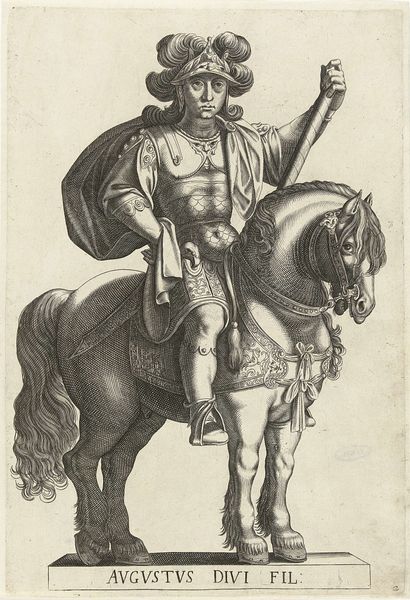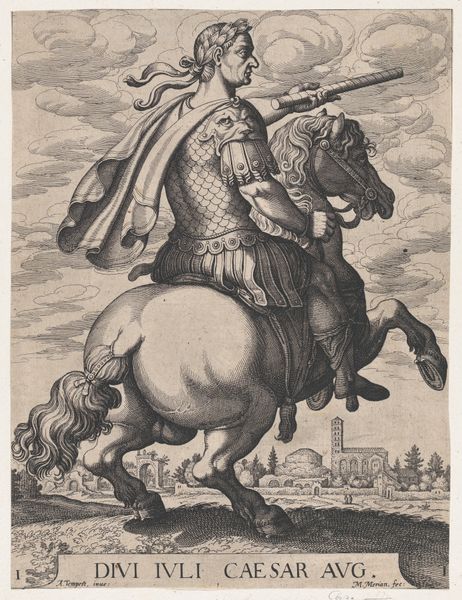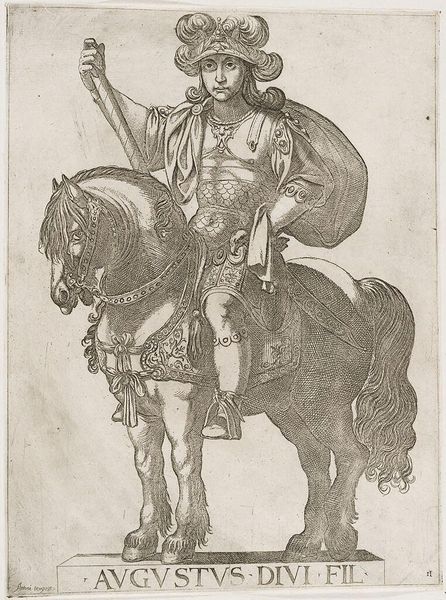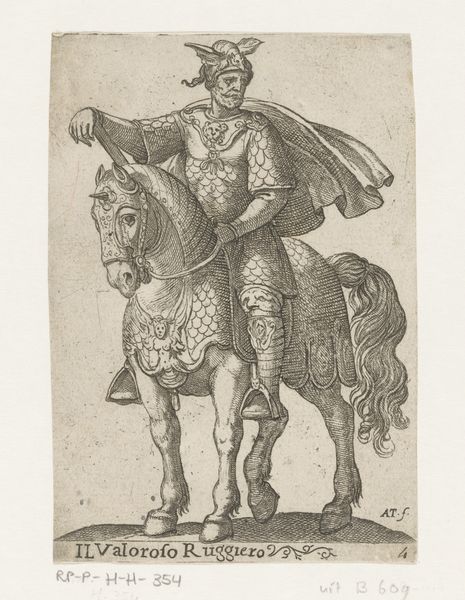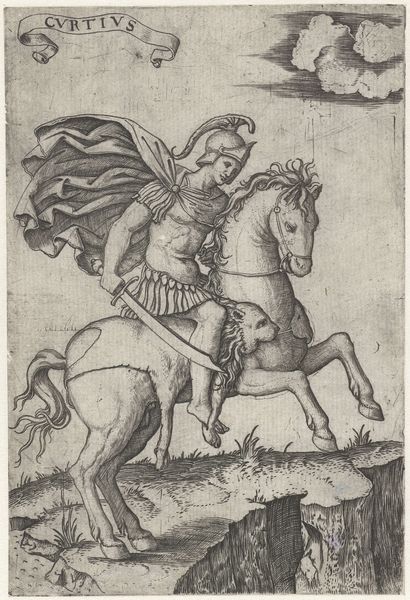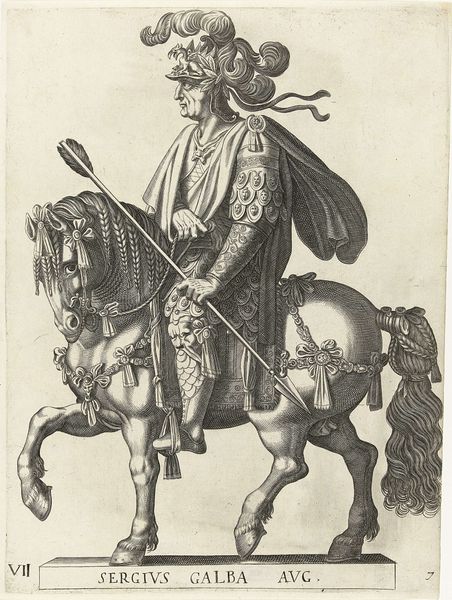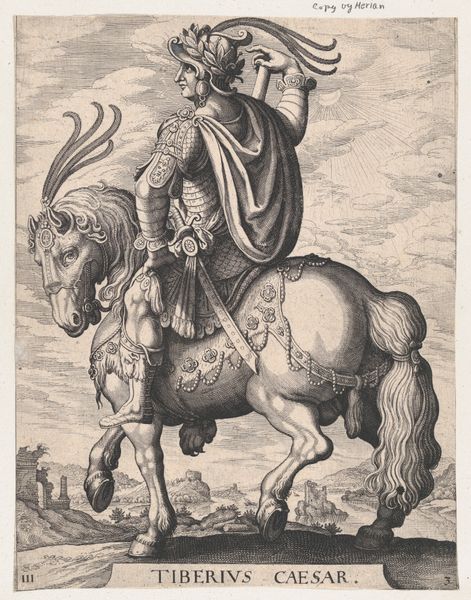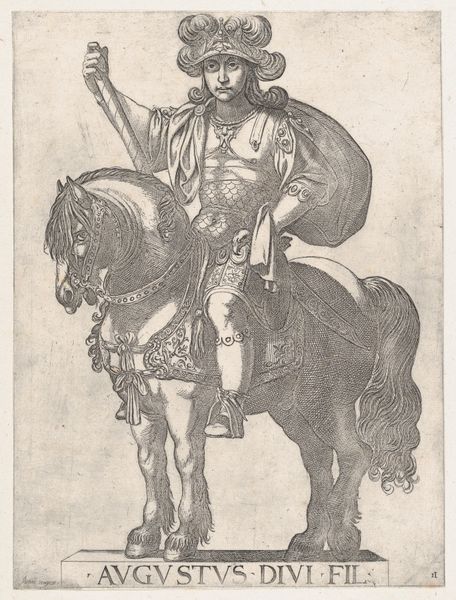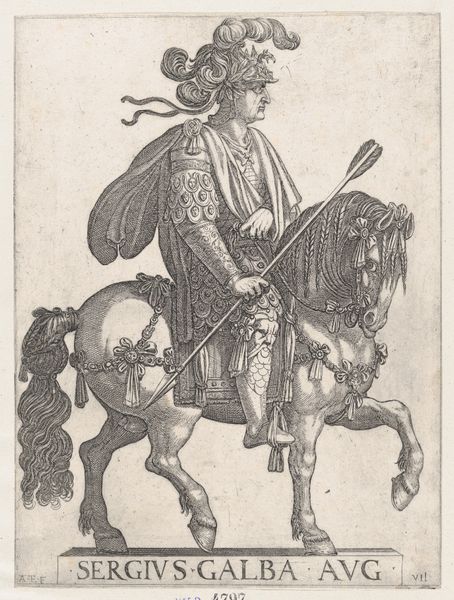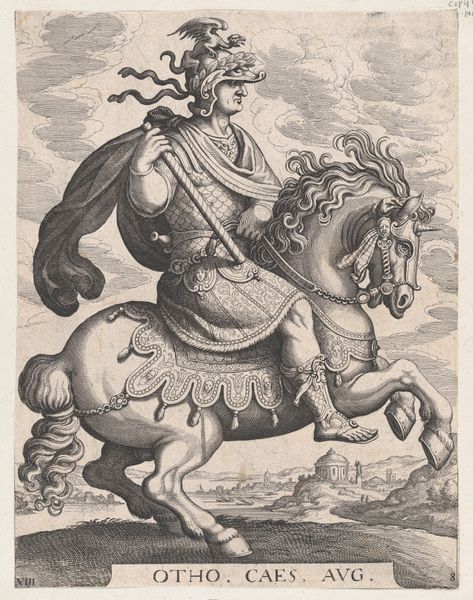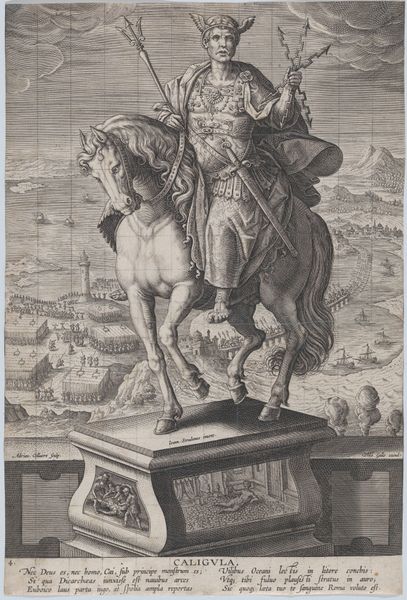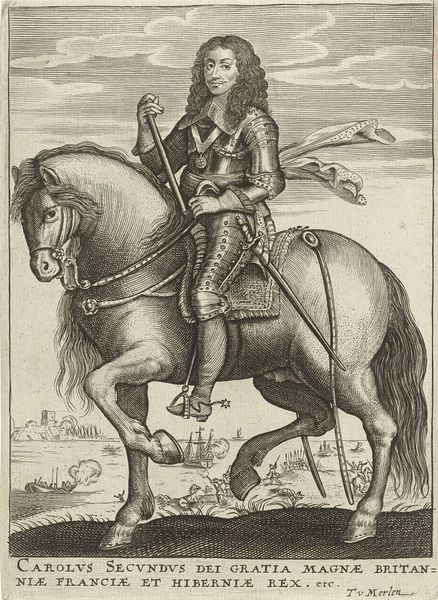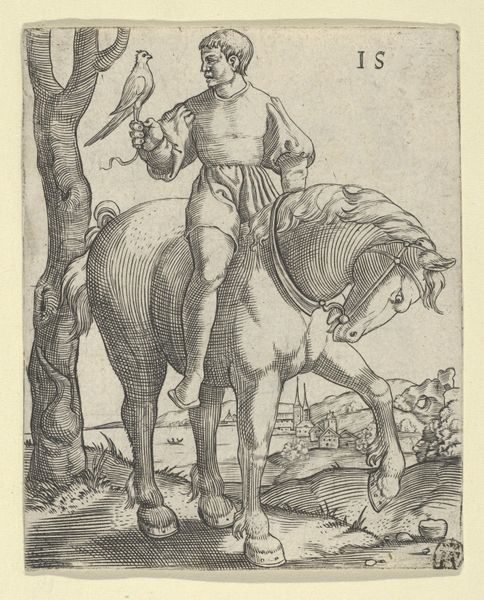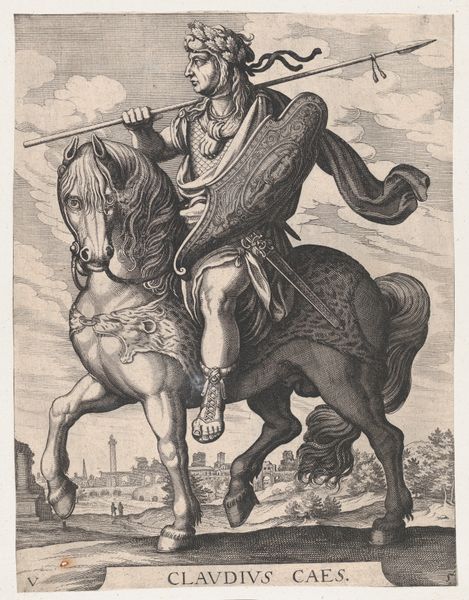
Plate 2: Emperor Augustus on Horseback, from 'The First Twelve Roman Caesars', after Tempesta 1610 - 1650
0:00
0:00
drawing, print, engraving
#
portrait
#
drawing
#
baroque
# print
#
history-painting
#
engraving
Dimensions: Sheet: 11 13/16 × 9 1/16 in. (30 × 23 cm)
Copyright: Public Domain
Editor: We are looking at "Plate 2: Emperor Augustus on Horseback, from 'The First Twelve Roman Caesars'," an engraving by Matthäus Merian the Elder from around 1610-1650. There's a striking formality to the image, a kind of stiff power, I'd say. What catches your eye about this piece? Curator: I'm immediately drawn to how the image functions within the context of its time, thinking about the construction and dissemination of power through visual media. The figure of Augustus, elevated on horseback, clearly evokes authority. How does Merian, through this print, participate in the Baroque-era’s visual rhetoric of leadership and control, particularly considering the social hierarchies inherent in 17th-century Europe? Editor: So, you see it as an intentional statement? The very act of creating it amplifies existing power dynamics? Curator: Precisely. Consider, too, the context of the Thirty Years' War, happening concurrently. Representing Augustus in this heroic light could serve as a form of commentary, perhaps a longing for a strong, unifying leader amidst devastating conflict. It prompts us to question what this image might have meant to viewers experiencing immense social and political upheaval. Did they see a celebration of power, a yearning for stability, or something else entirely? How might marginalized groups have perceived it differently? Editor: That’s fascinating. I hadn't considered it as a response to the anxieties of the time. It almost seems to propose a very specific type of leadership. Curator: Yes! What is so striking is the historical layers beneath this engraving. It's a Baroque print depicting a Roman Emperor—a commentary on power separated by centuries, yet intertwined in its symbolic representation. Understanding these layers encourages us to critically examine how images perpetuate certain narratives. Editor: This has definitely shifted my understanding of the artwork. It's no longer just a historical portrait, but a complex engagement with power, war, and cultural memory. Thanks!
Comments
No comments
Be the first to comment and join the conversation on the ultimate creative platform.
